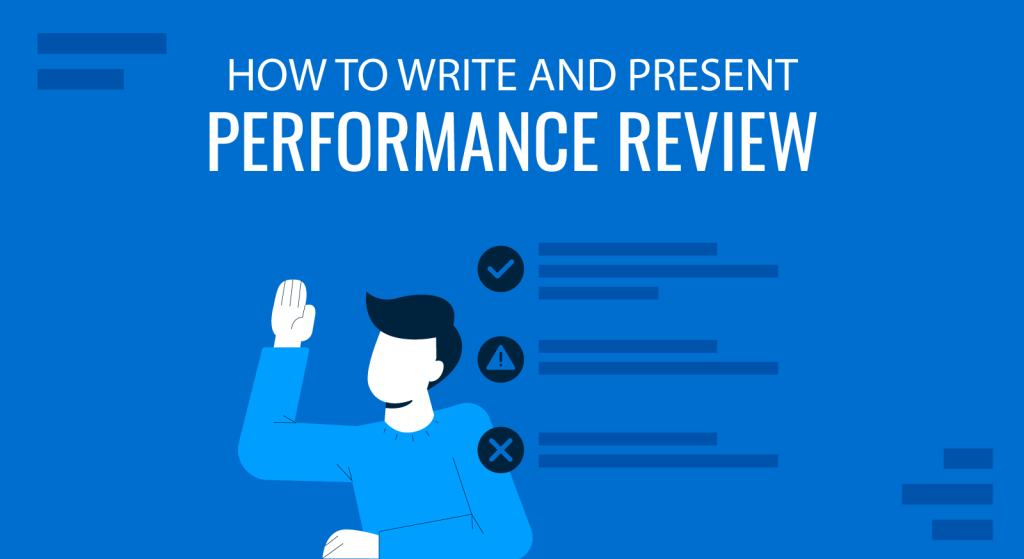
The performance review, as a crucial part of performance management, is one of the dreaded exercises of both managers and team members. However, it doesn’t have to be an intimidating, negative situation. In fact, a manager performance review tip by Harvard Business Review is to pointedly keep the conversation positive. By focusing on successes and opportunities for growth, managers can turn the employee performance review into a constructive experience that benefits everyone in the end.
What is Performance Management
Before we approach performance review examples, it’s necessary to establish some definitions to make sure we’re on the same page.
According to UC Berkeley’s Guide to Managing Human Resources, “Performance management is an ongoing process of communication between a supervisor and an employee that occurs throughout the year, in support of accomplishing the strategic objectives of the organization.”
Notice that performance management is more than a performance annual review. The performance evaluation is one component found in many performance management frameworks. In fact, UC Berkeley goes on to specify that the process “includes clarifying expectations, setting objectives, identifying goals, providing feedback, and reviewing results.”
By the time managers sit down for the performance review process, they will ideally have already been participating in this ongoing communication method. It will lead to much more valuable results than only engaging in the feedback part of the process.
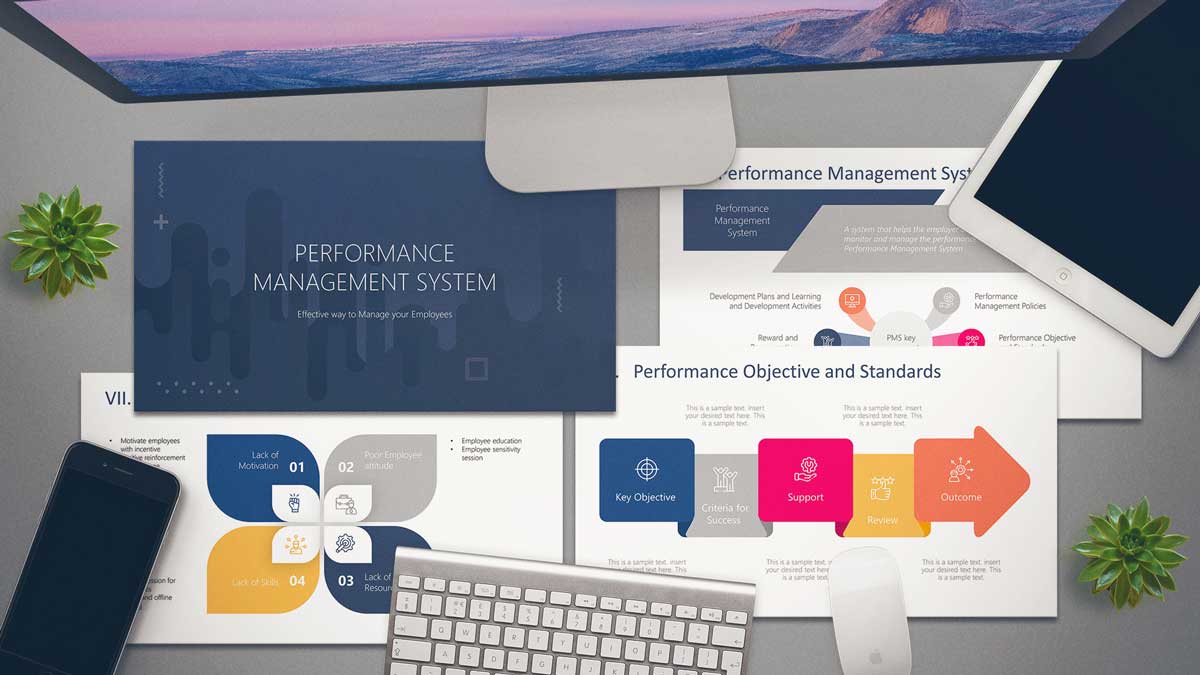
Types of Performance Management Frameworks
Following are three examples of common performance management frameworks.
The Armstrong Performance Management Cycle
Michael Armstrong, former Chief Examiner of the Chartered Institute of Personnel and Development, established a performance management framework that many human resources professionals abide by. The Armstrong Performance Management Cycle is a continuous process of improving performance. This is achieved by establishing individual and team goals, working towards the goals, evaluating progress, and developing skills. As seen in the name of this management framework, this process repeats constantly throughout a team or individual’s career at the organization.
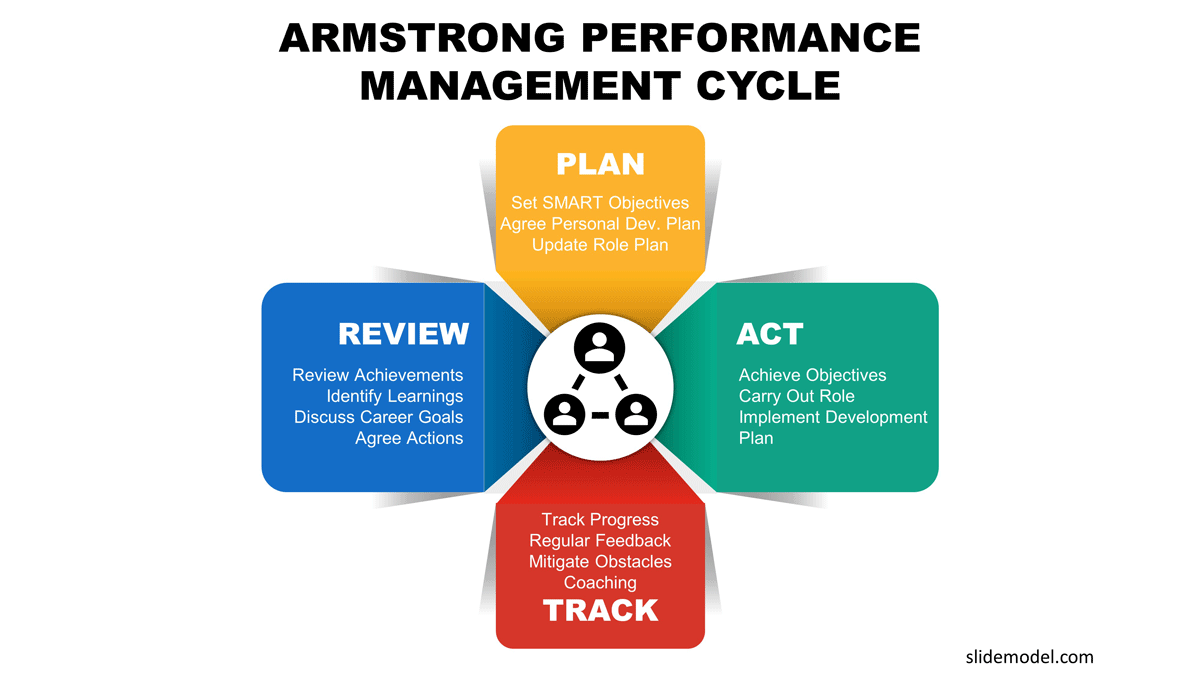
Agile Continuous Performance Management
Another performance management framework example is the agile continuous performance management. What makes the agile performance management system valuable is it’s focus on being continual and holistic. Feedback, which is called “check-ins” under this framework, is given frequently, making it feel more natural for all involved. With ongoing, positive performance management, managers and employees can develop authentic workplace relationships based on the performance improvement and transparency.
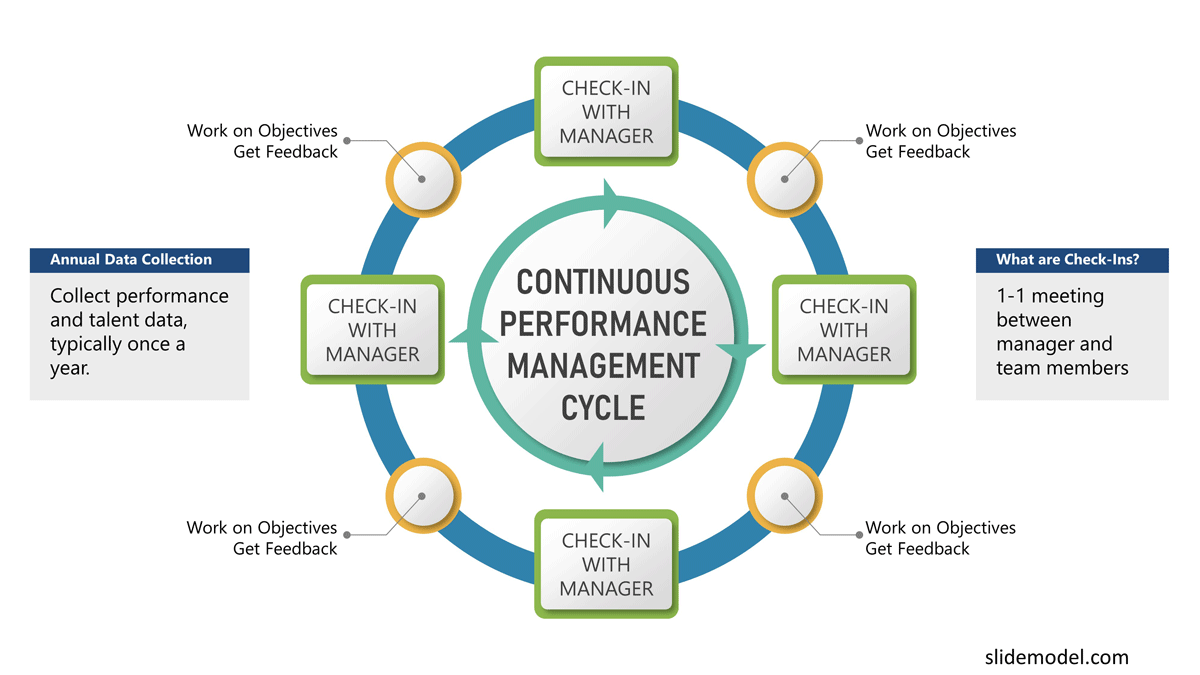
International Labor Organization’s Revised Performance Management Framework
The International Labor Organization’s system for managing performance aims to be a flexible process that can be applied to individuals or teams in many different fields and industries. It is also a continuous, comprehensive performance management framework. This cycle is divided into four parts, each focusing on dialogue and constructive feedback. One of the unique features of this management system is the inclusion of feedback from employee to leader.
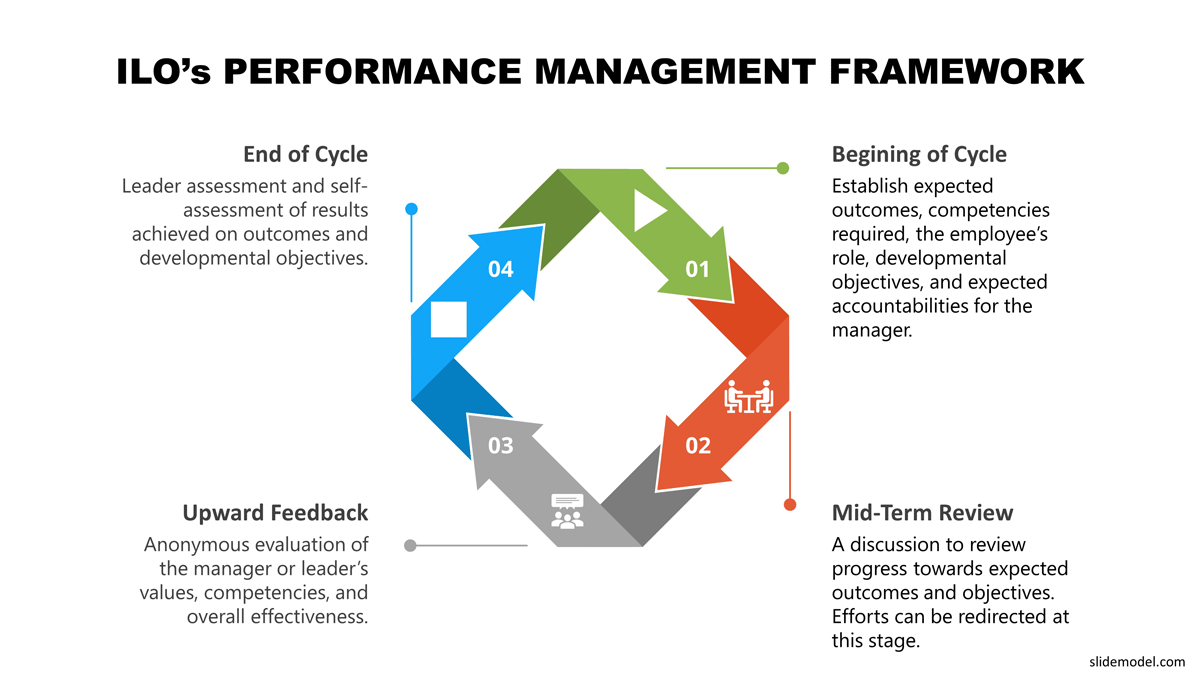
What is a Performance Review?
The component featured in essentially all performance management frameworks is the giving of feedback. This usually presents itself in the form of a performance review. Other names for the performance review are performance evaluation or performance assessment. As opposed to informal or casual feedback, the performance review is a formal appraisal of an employee and their work during an established time period.
While there are dozens of employee review templates out there, most evaluate overall performance, an employee’s strengths and weaknesses, and opportunities for improvement. Many managers and HR professionals use this regularly scheduled evaluation to set goals, as well.
Performance review templates will vary based on who is assessing whom. Common types of performance reviews include the traditional assessment where a manager evaluates an employee’s performance, the self assessment, team assessment, and leader assessment. Different performance management frameworks will involve a combination of these four.
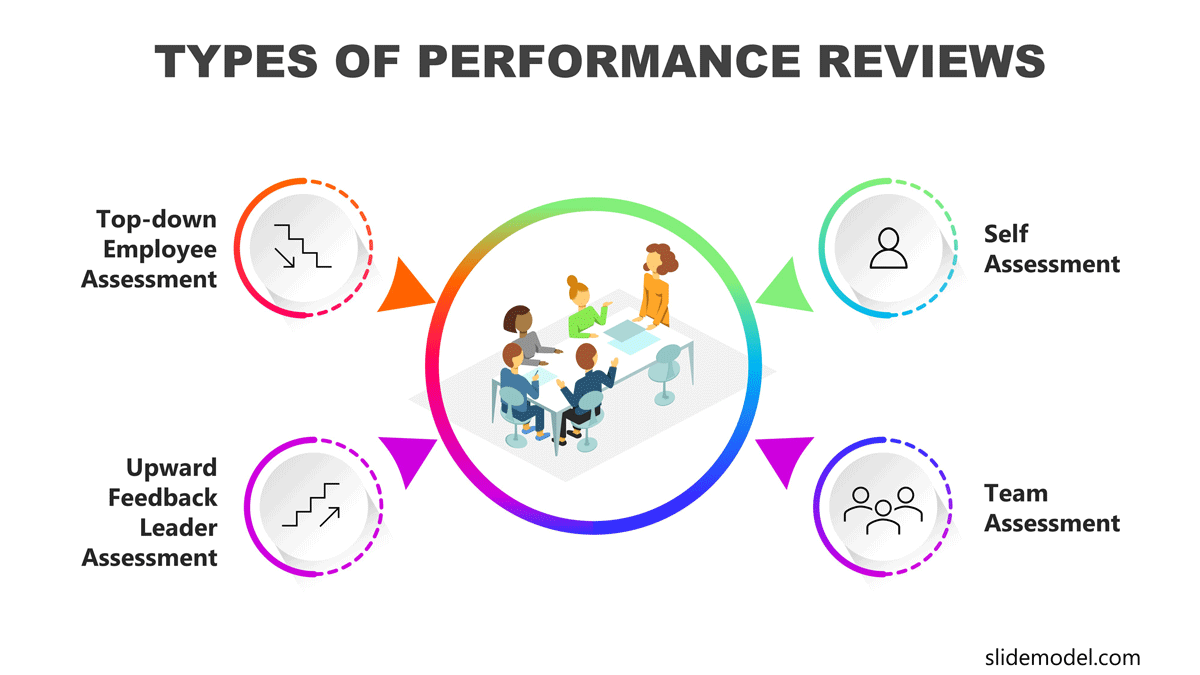
Employee Assessment
This top-down performance review is usually performed by a direct manager or HR manager. This evaluation is useful for establishing the value of an employee with examples of their performance to back it up. Often the employee assessment is conducted together with a self assessment.
Self Assessment
The self assessment component of a performance review is a helpful opportunity for individuals to reflect upon themselves with regards to their strengths and weaknesses. In order to turn the self assessment into a productive introspection, employees should also consider what they think they can do to improve and grow.
When conducted alongside an employee assessment, answers can be compared to see if managers and employees are on the same page. Any discrepancies can be analyzed and addressed, in order to strengthen the working relationship and understanding of the situation.
Team Assessment
A team assessment differs from an individual employee assessment in that it’s an opportunity to make sure team members are aligned and working well together, as well as progressing towards the team goals.
Leader Assessment
As mentioned in the International Labor Organization’s performance management framework, leader assessments can provide valuable feedback as well. During this assessment team members and employees evaluate their own managers, as well as potentially their manager’s superiors. This is often conducted anonymously, to ensure employees can be honest with their feedback without fear of retaliation.
Key Elements of a Performance Review
Depending on the performance management framework, reviews will have different key elements, but there are elements that all methods share, according to Harvard Business Review and Hubspot.
- Evaluate if job requirements are being met
- Compare strengths and weaknesses
- Highlight areas of improvement
- Evaluate if previously defined goals were met
- Recommend actionable goals
- Welcome employee input
How to Write a Performance Review
We recommend managers use a performance review template to help guide them through each step. Evaluation templates help managers know what to say in a performance review. They provide structure to the review, which makes the process consistent. Employee performance templates also make the review process scalable throughout the team or organization.
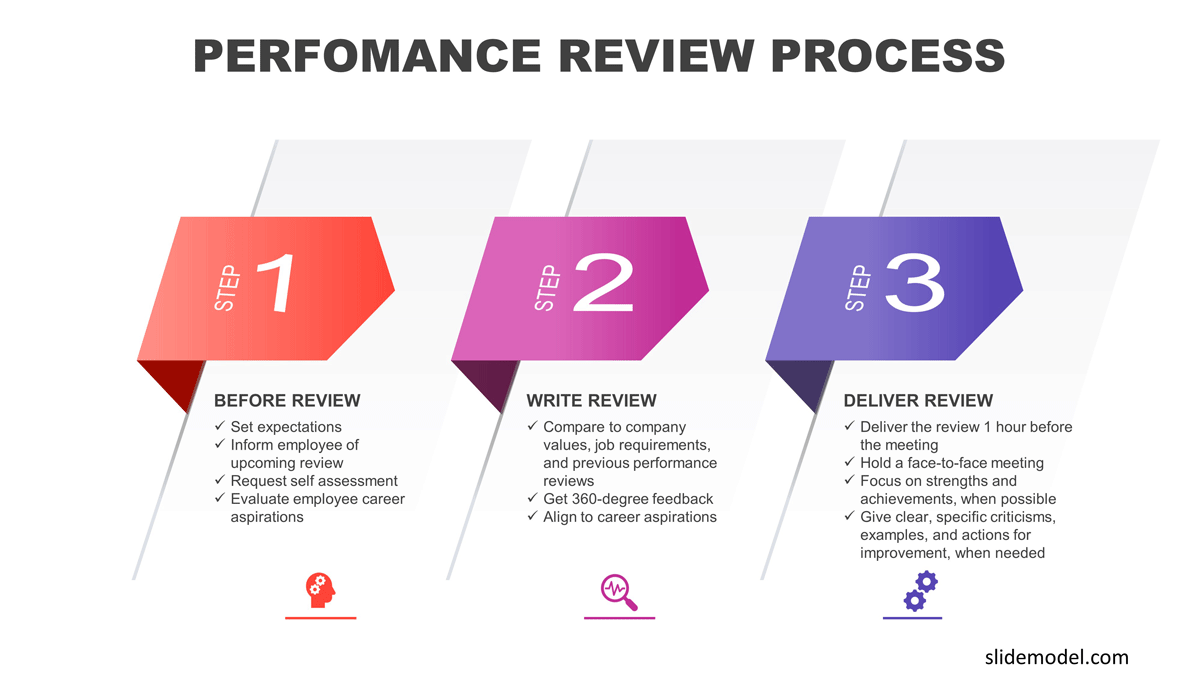
Prior to Writing the Performance Review
Harvard Business Review recommends reviewers set expectations early, prior to the official feedback. This involves informing the employee that they will be reviewing them soon, asking the employee for their self assessment, and evaluating employee career aspirations.
When Writing the Performance Review
When sitting down to write the performance review, managers should have supporting documentation to help them direct their evaluation. For example, comparing employee performance and characteristics to the organization’s specified values can help guide the evaluation. Additionally, managers can compare employee performance to the actual description of requirements for their role. This helps keep evaluations realistic and on-track. Finally, it’s a good idea to compare current performance to that of previous employee performance reviews. This gives the manager a bigger picture into employee growth, as well as what achievable goals are.
When writing a performance review, managers can also consult with others, including coworkers, other managers, and subordinates of the employee under review. This is called 360-degree feedback and can help give a manager ideas of what to write.
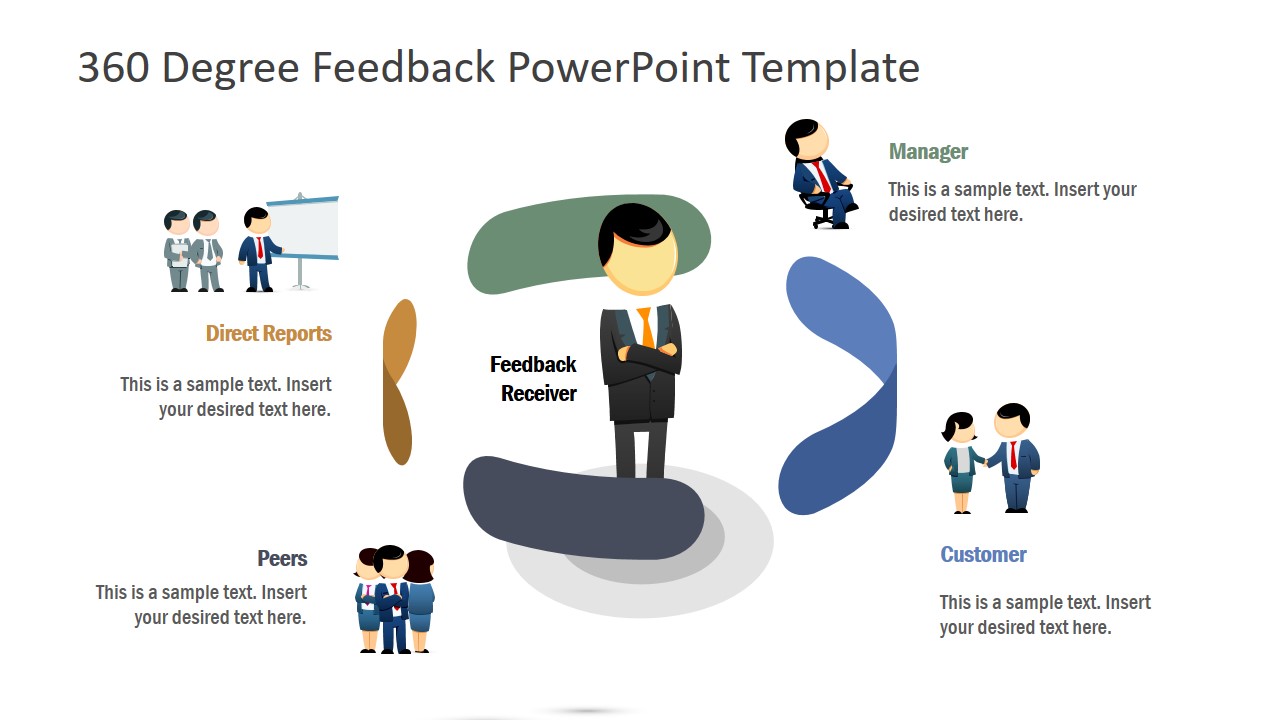
As far as the career aspirations we recommend requesting from the employee prior to the evaluation, this is useful for framing the review. Not every employee has very high aspirations. The evaluation should align both the organization’s expectations of the employee and their own aspirations.
Delivering the Performance Review
HBR also recommends presenting the performance review to the individual about an hour before their meeting to discuss it. This lets the employee move past any potential emotional responses and prepare rational responses. This will lead to a much more constructive discussion and allow for a more positive plan forward.
Whenever possible, hold the performance review presentation face-to-face to avoid misunderstandings. While a performance review PPT or pdf is beneficial for organizing and visualizing the evaluation, presenting them in person will lead to a richer discussion and more realistic action plans.
For high-performing employees, HR experts recommend focusing on the things they are doing well. After discussing examples of achievements and strengths, the manager can ask the employee their feelings about how things are going. This naturally leads into a conversation about opportunities for growth and improvement.
When delivering feedback to marginal employees, they shouldn’t sugar-coat criticisms or provide meaningless compliments. Instead, reviewers should be straightforward and clear with their message. Discuss what isn’t working, what is working, and what actions need to be adopted to improve. When giving advice for improving, managers should be as specific as possible and provide examples.
How to Present a Performance Review
Here are the most important slides to include in a performance review presentation. Following this performance review example structure will help managers lessen the discomfort of presenting a performance review, by following a clear presentation guide.
Slide 1: Cover Slide
Establish who is reviewing, who is being reviewed, and the date of the performance review. Note that this information is also important since the performance review presentation will probably become part of an ongoing performance documentation.
Slide 2: Table of Contents
Part of the discomfort of performance reviews is the concept of the unknown. For an employee, it’s speculating on what their manager is going to say in the performance review. A clear table of contents will hopefully help ground the employee by showing them clearly what they can expect from the presentation, and in what order.
Slide 3: Evaluate if job requirements are being met
In this PPT slide, the reviewer should compare, side-by-side the job requirements and the actual job performance of their subordinate. This requirement versus performance comparison helps the evaluation stay objective. Provide examples of when the requirements are or are not being successfully met, whenever possible.

Slide 4: Strengths
When presenting employee strengths, be as specific as possible. Explain why this strength matters, an example of when this strength was evident, and what impacts this strength has had. In the presentation, add a list of strengths with or without a short description and/or example, in case the performance review is presented without the accompanying meeting.
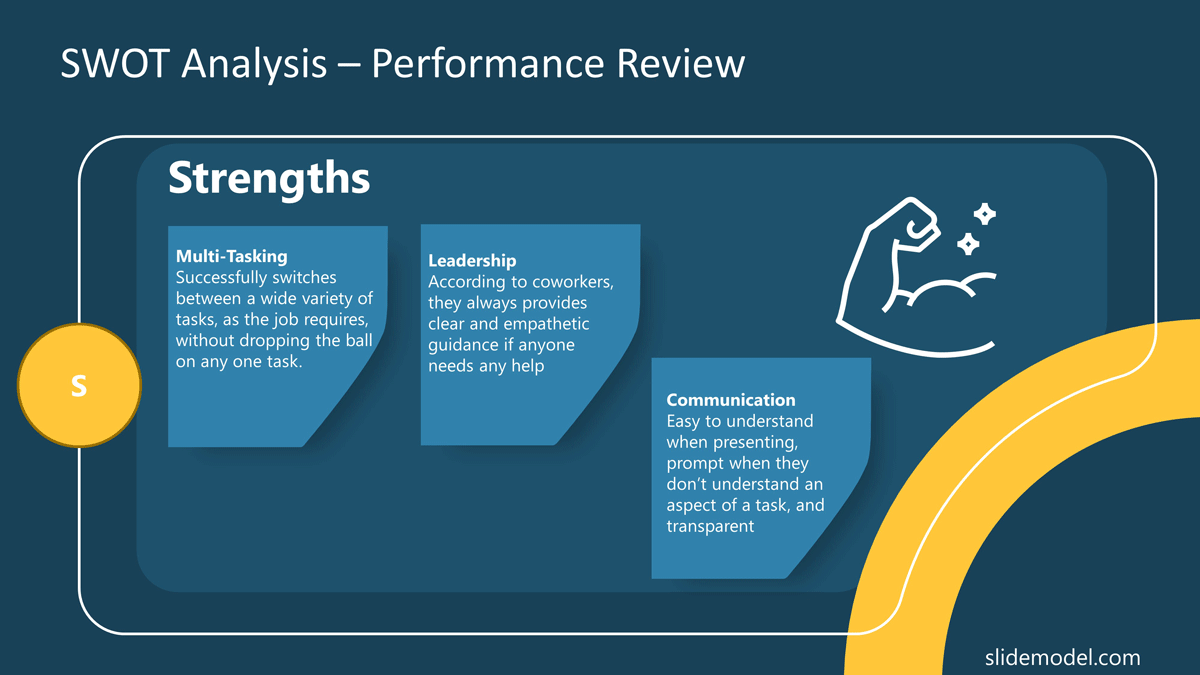
If the manager previously asked for a self assessment, add a comparison here between the reviewer’s opinion of the employee strengths and their employee’s opinion.
Slide 5: Achievements
List any specific achievements the employee has made during the performance period.
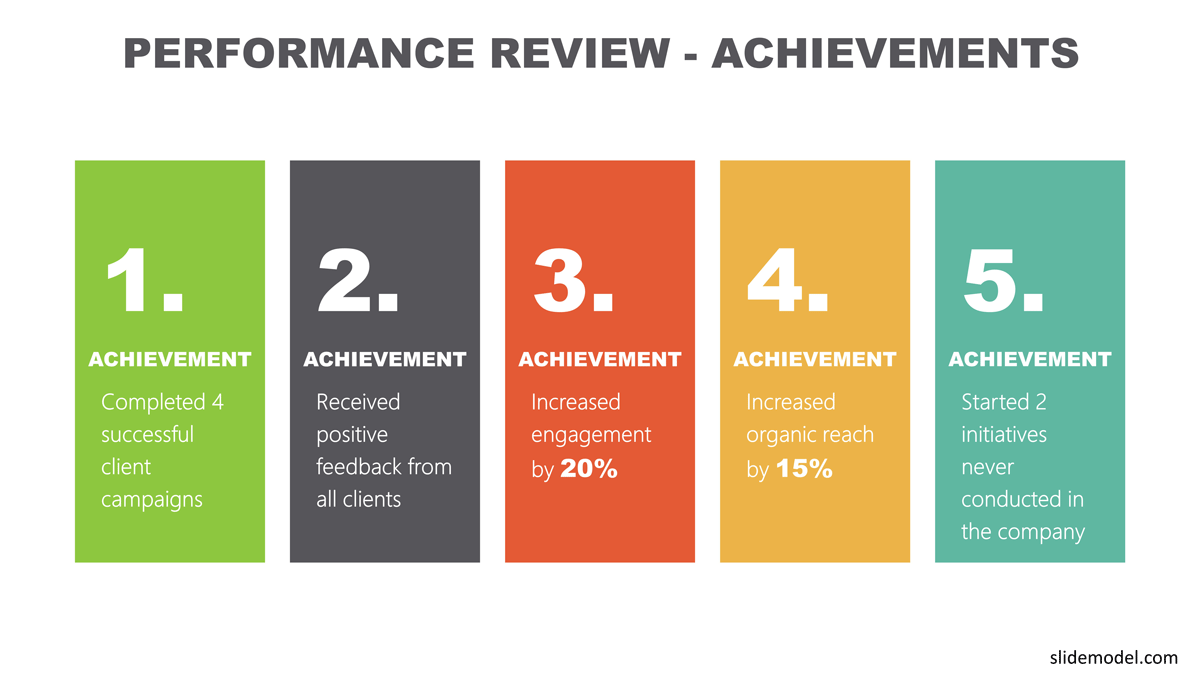
Slide 6: Highlight areas of improvement
This is another way to frame weaknesses. When presenting areas of improvement, consider what the employee needs to improve, why these areas are necessary to address, how the manager can help the employee improve, and what specific steps are needed to improve. Be specific and provide examples whenever possible.
This is another good slide where managers can compare their evaluation of areas of improvement with the answers employees provided in their self assessment. You can combine these slides with other performance improvement plan templates for PowerPoint and Google Slides.
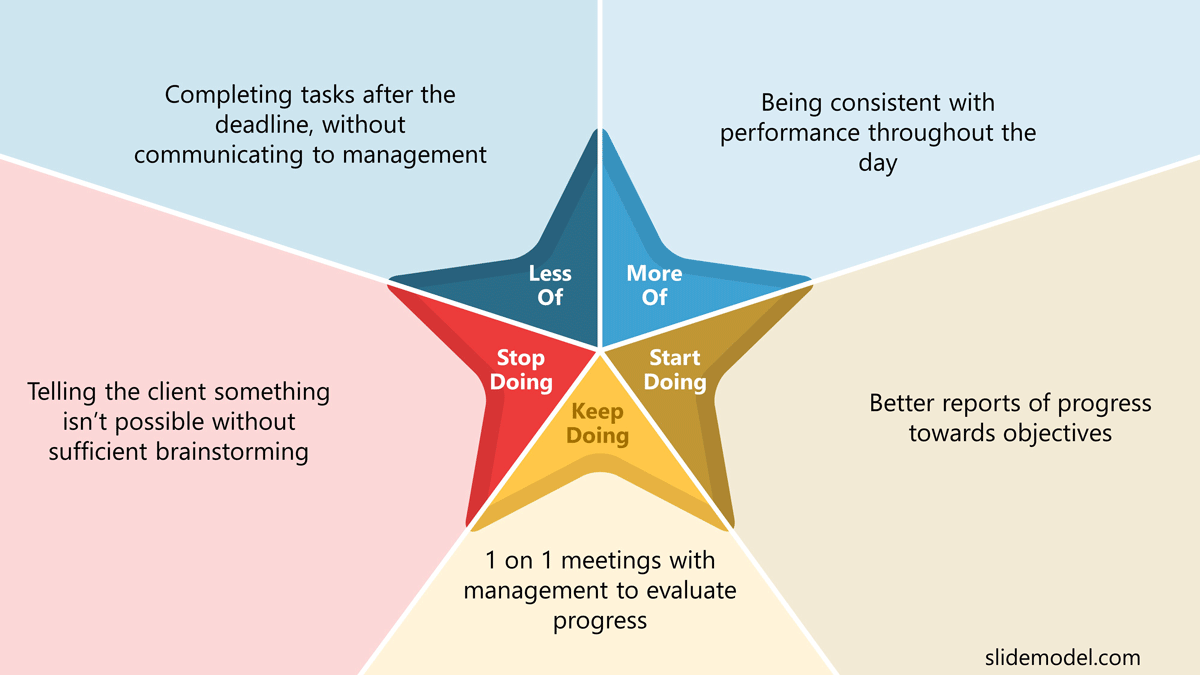
Slide 7: Evaluate if previously defined goals were met
If this isn’t the first performance review a manager has conducted for an individual, then there will be previously defined goals from former evaluations. On this slide, list the previous goals and add a brief evaluation for each. This will help decide what goals should be checked off, maintained, or adjusted for the next evaluation period, which will be presented in the next slide.
Slide 8: Recommend actionable goals
When presenting goals, we recommend using the SMART formula. SMART goals stands for specific, measurable, attainable, relevant, and time-based. This method of creating goals helps ensure the goal will be achieved as expected.
The goals established in this performance review will most likely be evaluated during the next performance review. As such, the “time-based” aspect of the goal should take this into account.

Slide 9: Welcome employee input
Close the performance review presentation by giving the employee space to talk.
Conclusion
By following this performance review template, reviewers can make sure their evaluation is more than just a meaningless task checked off the list. When done well, the performance review sets the mood for the whole next period, giving both managers and employees a clear guide towards moving forward and achieving their goals more successfully. As far as the tendency for employee evaluations to be uncomfortable situations, follow the advice in this article, practice, and you’ll soon find the valuable potential of a well-presented performance review.


